Going All In to Bridge the Health Data Gap
In America today, where we live has a profound impact on our health. Your zip code may be a greater indicator of health than your genetic code. Your neighborhood can predict whether you’re likely to suffer from preventable illnesses, how safe you feel in your home, and your ability to exercise regularly and access healthy food.
It’s clear that what really makes you healthy goes beyond what’s done or revealed at the doctor’s office. In fact, only 10% of premature deaths are attributable to shortfalls in medical care; health behaviors, social and economic factors, physical environment, and genetics account for the rest.
If we can identify and address these root causes, we can do more to ensure everyone has a fair chance to lead a healthy life. But how can communities begin to understand the complex web of factors that contribute to their health? The answer is clear—we need a better approach to collecting, sharing and using health data, one that includes sectors beyond health care.
The United States has made significant strides in provider adoption of health information technology, yet has not achieved all of the anticipated gains. Even as national roadmaps and proposals are working to achieve health IT interoperability, there is a growing call to include partners and data sources beyond the health care sector so that communities can have a deeper understanding of the social determinants of health—including income, education, and housing. As it stands, many decision-makers are missing this critical information that could help them design more effective public health policies and programs.
Data Across Sectors for Health (DASH), a national program of the Robert Wood Johnson Foundation, aims to help close the health data gap by supporting projects that share data and information across sectors to improve health equity. Led by the Illinois Public Health Institute (IPHI) in partnership with the Michigan Public Health Institute (MPHI), DASH is funding ten projects across the nation that are forming collaborations to share data between health care, public health and other sectors like social services, education, housing, law enforcement, and the private sector.
What we know about multi-sector data sharing projects
In the fall of 2014, RWJF launched the Data for Health initiative, hosting events in five cities across the country to learn how communities are already using and sharing data to improve health. These conversations identified a growing need to build community data infrastructures, bringing organizations together to create networks that integrate health with social and community services.
DASH built on the Data for Health report by conducting an environmental scan to identify existing multi-sector data sharing collaborations. The early results found a vibrant set of initiatives. The majority of existing collaborations center on health care delivery and public health, but there is an increasing understanding and interest in sectors that reflect the social determinants of health. Stakeholders who are pioneering these initiatives identified several challenges, including lack of interoperability between systems, difficulty generating buy-in from other sectors, and limited resources and capacity. As one key informant stated, “This is new, cutting-edge, and there is no road map.” In order to move the field forward, it’s critical that projects share what they are learning.
Joining forces to break down data siloes
Making progress in this emerging field will require innovation from many different organizations, sectors, and communities. There is power in peer learning and collaboration, and that’s why DASH is joining forces with similar initiatives like AcademyHealth’s Community Health Peer Learning (CHP) Program to help generate and accelerate knowledge by sharing insights and lessons learned.
Earlier in the year, DASH and CHP launched All In: Data for Community Health, a network of 25 different community data sharing projects that aims to break down data siloes and advance population health. The All In network is committed to crossing boundaries, creating meaningful connections, and developing a shared vision that can guide and advance the field. As DASH and CHP projects work to tackle common challenges, the findings and best practices that emerge will be disseminated to help build capacity for this critically important work.
As more sectors are engaged to collaborate on sharing data, we can help empower communities with the information they need to give everyone an equal opportunity to be healthy—regardless of where they call home.
This blog was originally published on the National Network of Public Health Institutes website.
